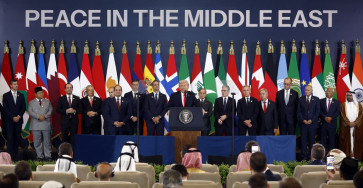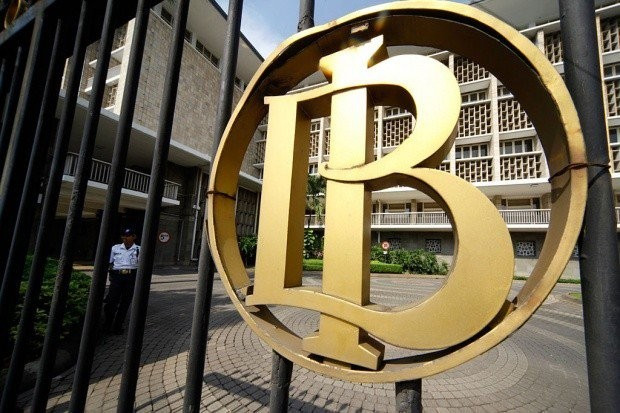Popular Reads
Top Results
Can't find what you're looking for?
View all search resultsPopular Reads
Top Results
Can't find what you're looking for?
View all search resultsStocks slip amid US tariff confusion, oil skids
With very few actual trade deals done, analysts had suspected Donald Trump's tariff deadline would be pushed out, though it was still not clear if the new date applied to all trading partners or just some.
Change text size
Gift Premium Articles
to Anyone
S
tock markets slipped in Asia amid much confusion as US officials flagged a delay on tariffs but failed to provide any detail or paperwork on the change, while oil prices slid as OPEC+ opened the supply spigots more than expected.
The United States is close to finalizing several trade agreements in the coming days and will notify other countries of higher tariff rates by July 9, President Donald Trump said on Sunday, with the higher rates to take effect on August 1.
"President Trump's going to be sending letters to some of our trading partners saying that if you don't move things along, then on August 1 you will boomerang back to your April 2 tariff level," US Treasury Secretary Scott Bessent told CNN.
Trump in April announced a 10 percent base tariff rate on most countries and higher "reciprocal" rates ranging up to 50 percent, with an original deadline of this Wednesday.
However, Trump also said levies could range in value from "maybe 60 percent or 70 percent tariffs to 10 percent and 20 percent", further clouding the picture.
With very few actual trade deals done, analysts had suspected the date would be pushed out, though it was still not clear if the new deadline applied to all trading partners or just some.
"This renewed escalation in trade tensions comes at a time when major trade partners, including the EU, India and Japan, are believed to be at crucial stages of bilateral negotiations," analysts at ANZ said in a note.
"If reciprocal tariffs are implemented in their original form or even expanded, we believe it will intensify downside risks to US growth and increase upside risks to inflation."
Investors have grown somewhat used to the uncertainty surrounding US trade policy and the initial market reaction was cautious. S&P 500 futures and Nasdaq futures both eased 0.3 percent.
Japan's Nikkei lost 0.3 percent, while South Korean stocks fell 0.7 percent. MSCI's broadest index of Asia-Pacific shares outside Japan eased 0.1 percent.
Dollar doldrums
Safe-haven bonds were better bid, with 10-year Treasury yields down almost 2 basis points at 4.326 percent.
Major currencies were little changed as the dollar index continued to languish near four-year lows at 96.913. The euro held at US$1.1787, just off last week's top of $1.1830, while the dollar dipped to 144.38 yen.
The dollar has been undermined by investor concerns about Trump's often chaotic tariff policy and what that might do to economic growth and inflation.
The same worries have kept the Federal Reserve from cutting rates and minutes of its last meeting should offer more color on when the majority of members might resume easing.
It is a relatively quiet week for Fed speakers with only two district presidents on the docket, while economic data is also sparse.
The Reserve Bank of Australia is widely expected to cut its rates by a quarter point to 3.60 percent at a meeting on Tuesday, the third easing this cycle, and markets imply an eventual destination for rates of 2.85 percent or 3.10 percent.
New Zealand's central bank meets on Wednesday and is likely to hold rates at 3.25 percent, having already slashed by 225 basis points over the past year.
In commodity markets, gold slipped 0.3 percent to $3,324 an ounce, though it did gain almost 2 percent last week as the dollar fell.
Oil prices slid anew after the Organization of the Petroleum Exporting Countries and their allies, a group known as OPEC+, agreed on Saturday to raise production by a larger-than-expected 548,000 barrels per day in August.
The group also warned that it could hike by a similar amount in September, leaving analysts with the impression it was trying to squeeze lower margin producers and particularly those pulling oil from US shale.
Brent dropped 52 cents to $67.78 a barrel, while US crude fell $1.01 to $65.99 per barrel.










